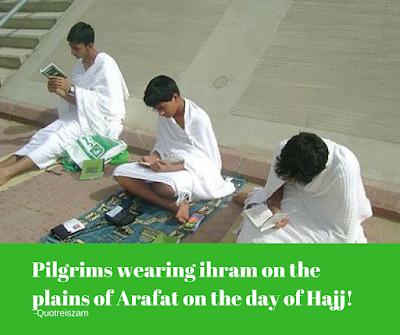The 9th Dhul-Hijjah is known as Day of Arafah, and this day is called the Day of Hajj.
Arafat
On 9th Dhu al-Hijjah before noon, pilgrims arrive at Arafat, a barren and plain land some 20 kilometers east of Mecca, where they stand in contemplative vigil: they offer supplications, repent on and atone for their past sins, and seek mercy of God, and listen to sermon from the Islamic scholars who deliver it from near Jabal al-Rahmah (The Mount of Mercy) from where Muhammad is said to have delivered his last sermon. Lasting from noon through sunset, this is known as 'standing before God' (wuquf), one of the most significant rites of Hajj. At Masjid al-Namirah, pilgrims offer noon and afternoon prayers together at noon time. A pilgrim's Hajj is considered invalid if they do not spend the afternoon on Arafat.
Muzdalifah
Pilgrims must leave Arafat for Muzdalifah after sunset without praying maghrib (evening) prayer at Arafat. Muzdalifah is an area between Arafat and Mina. Upon reaching there, pilgrims perform Maghrib and Isha prayer jointly, spend the night praying and sleeping on the ground with open sky, and gather pebbles for the next day's ritual of the stoning of the Devil (Shaitan).


